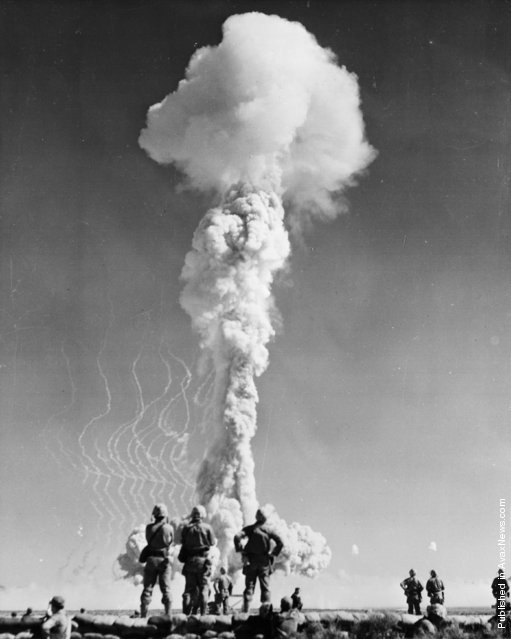
US marines watch the mushroom cloud from an atomic explosion rise above the Yucca flats, Nevada during a US nuclear weapons test. (Photo by Keystone/Getty Images). USA, 1945
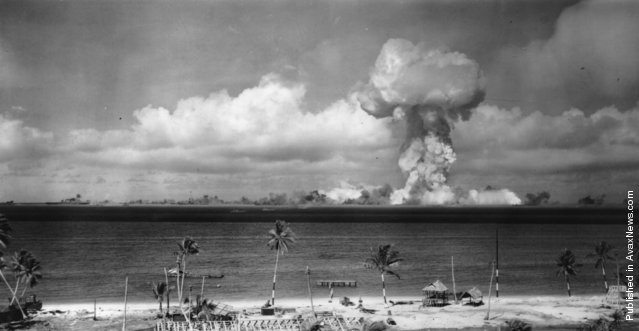
A mushroom cloud forms after the initial Atomic Bomb test explosion off the coast of Bikini Atoll, Marshall Islands. (Photo by Keystone/Getty Images). July 1946
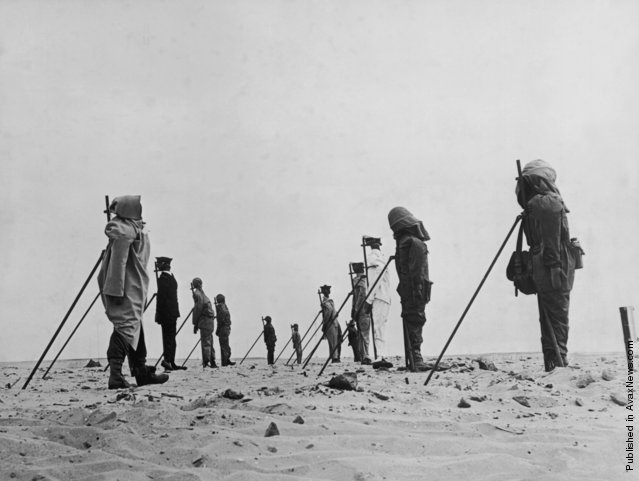
A set of dummies propped up in the Sahara Desert awaiting a third atomic bomb explosion during the French nuclear testing. The third test, codenamed Gerboise Rouge or 'Red Jerboa', took place outside Reggane in Algeria. (Photo by Keystone/Getty Images). December 1960
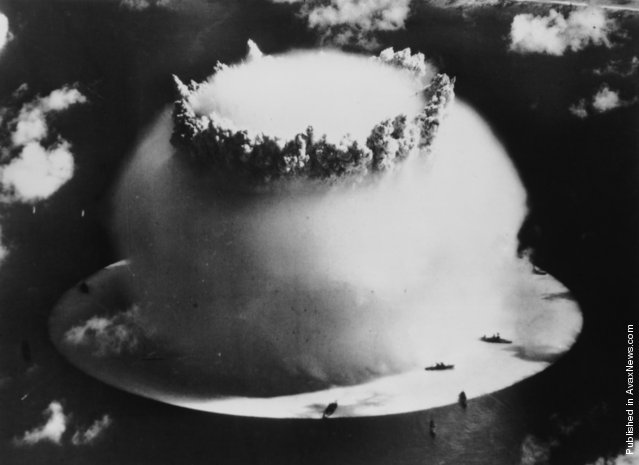
An atom bomb being exploded under water at Bikini Atoll in the Pacific Ocean. (Photo by Keystone/Getty Images). 1946
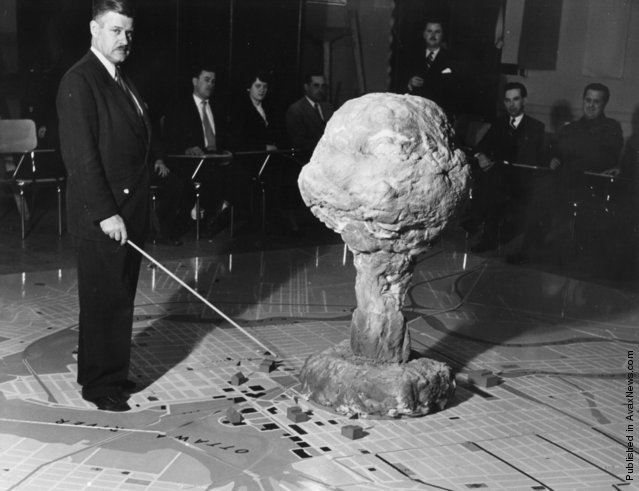
The commandant of the Civil Defence Technical Training Centre in Quebec demonstrates the effect of an atomic bomb exploding over a city, Canada, 28th April 1952. (Photo by Hulton Archive/Getty Images)
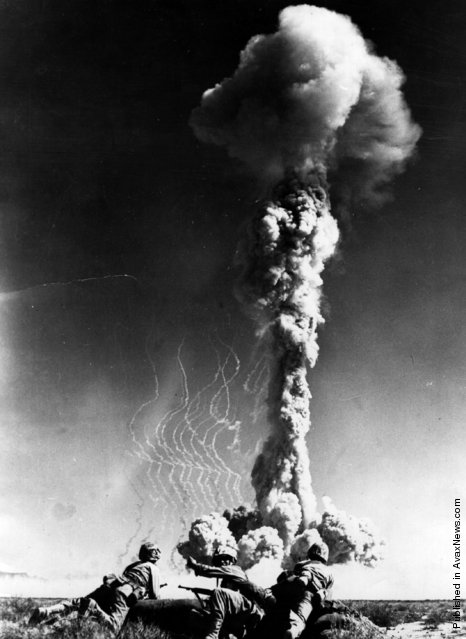
An atomic mushroom-shaped cloud rises above the ground during US atom bomb tests at Yucca Flat, Nevada. Over 2,000 Marines took part in the tests, suitably equipped to charge their “objective” seconds after the explosion on the ground. (Photo by Keystone/Getty Images). 1952
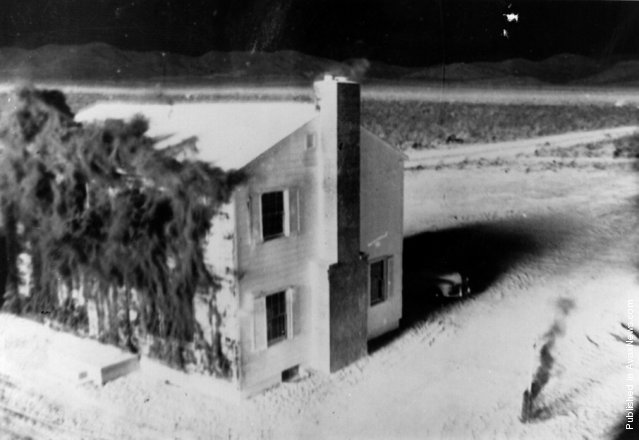
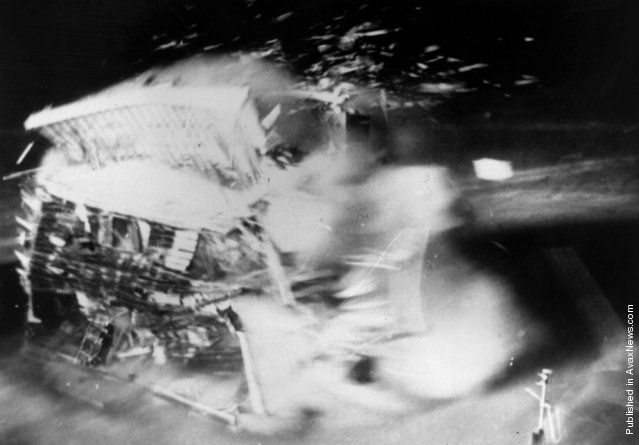
During the atom bomb tests at Nevada, a house is set on fire, by an atom blast at Yucca Flat, the proving grounds for atom bombs. It is photographed by a motion picture camera located 60 feet from the doomed house, which shoots 24 frames per second. The camera was protected by a two inch deep lead sheath, and the only source of light was from the atom bomb. Original Artwork: By Edgerton, Getrmeshausen and Grier Inc, for AEC. (Photo by Keystone/Getty Images). 1952
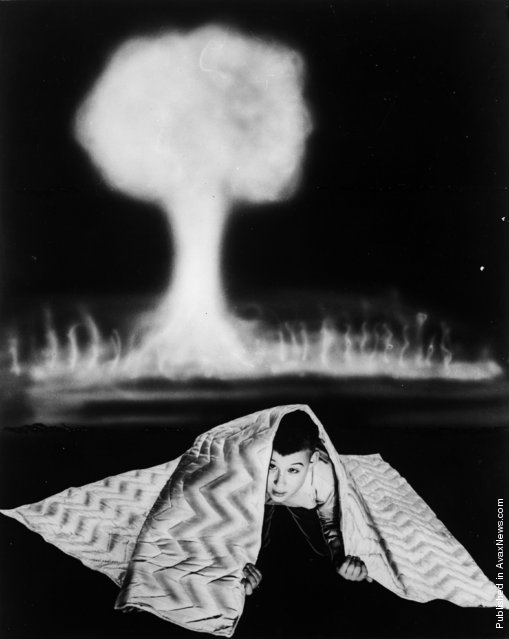
An advertisement for a radiation and fire resistant blanket. (Photo by Keystone/Getty Images). 3rd August 1954
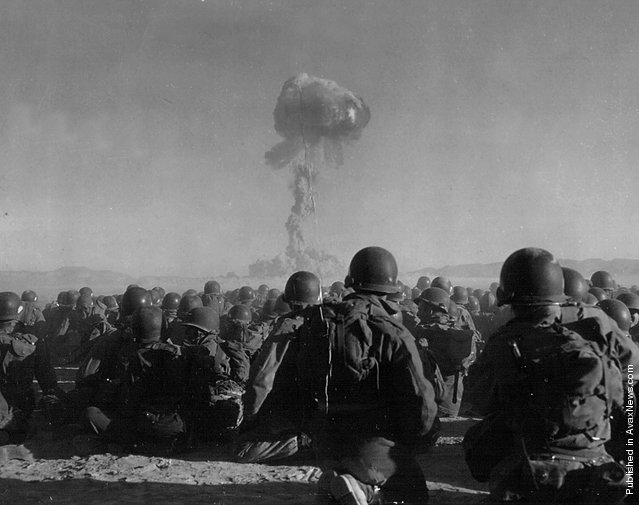
Troops of the U.S. Army 11th Airborne Division watch a plume of radioactive smoke rise November 1, 1951 after a blast at Yucca Flats, Nevada . (Photo by National Archive/Newsmakers)
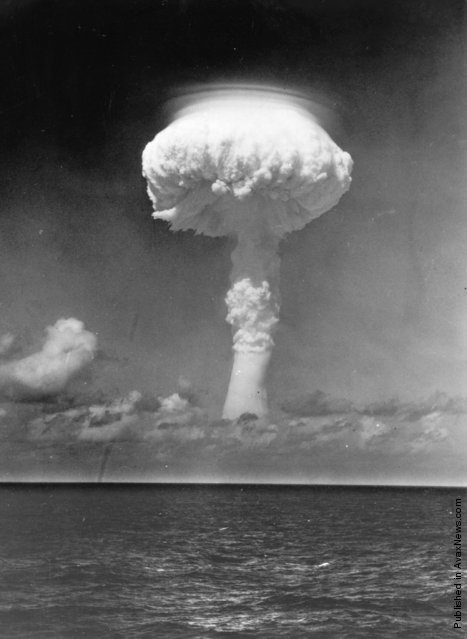
A mushroom cloud from an atomic explosion in the Pacific. (Photo by Keystone/Getty Images). 1950
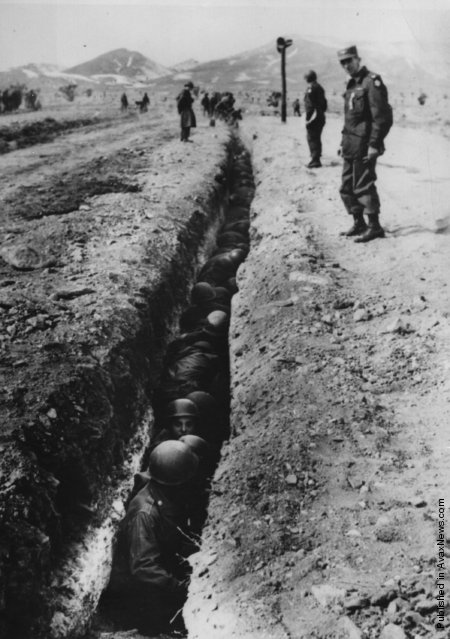
US Army personnel rehearse moving into trenches for one of a series of nuclear explosions at the Atomic Energy Commission's Nevada Test Site. The trenches are only six feet deep and a mere 4,000 yards from Ground Zero. After detonation the soldiers will walk through the blast area to inspect damage inflicted on radiation-exposed equipment. (Photo by Keystone/Getty Images). 28th April 1955
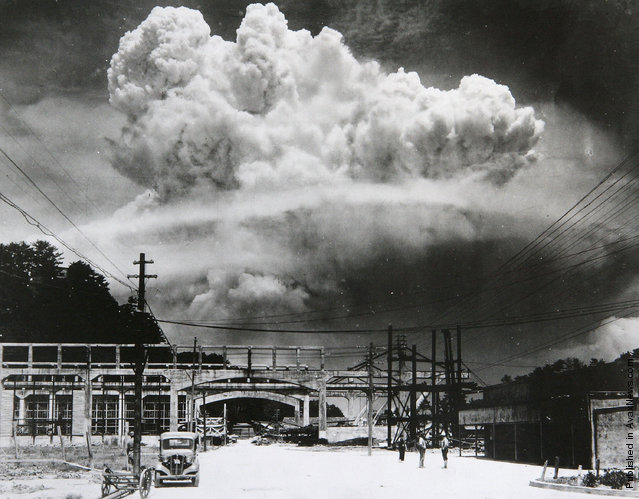
A photograph of the atomic bomb dropped in Nagasaki shows how it exploded 50m above ground on August 8, 2005 in Nagsaki, Japan. Nagasaki marks the 60th anniversary of the atomic bombing on August 9. The US B-29 superfortress Bockscar dropped an atomic bomb on northern part of Nagasaki City on August 9, 1945. (Photo by Hiromiti Matuda/Handout from Nagasaki Atomic Bomb Museum/Getty Images)
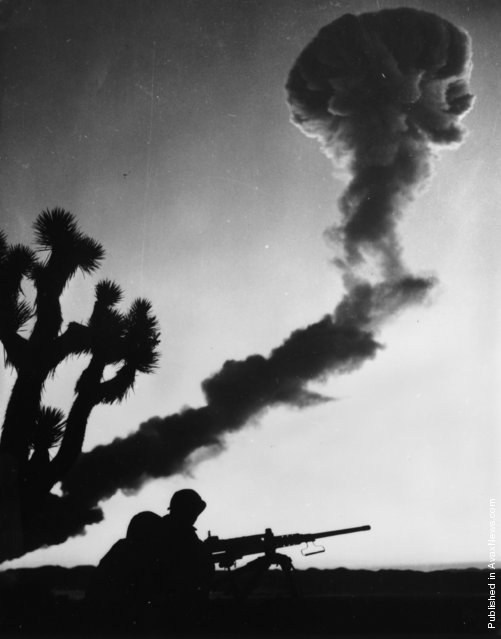
Two infantry men of the US Marines manning a machine gun emplacement during an 'A' bomb blast at Yucca Flat, Nevada, one of the Spring Series of atomic tests conducted by the US Department of Defence in conjunction with the Atomic Energy Commission. (Photo by Keystone/Getty Images). 29th April 1955
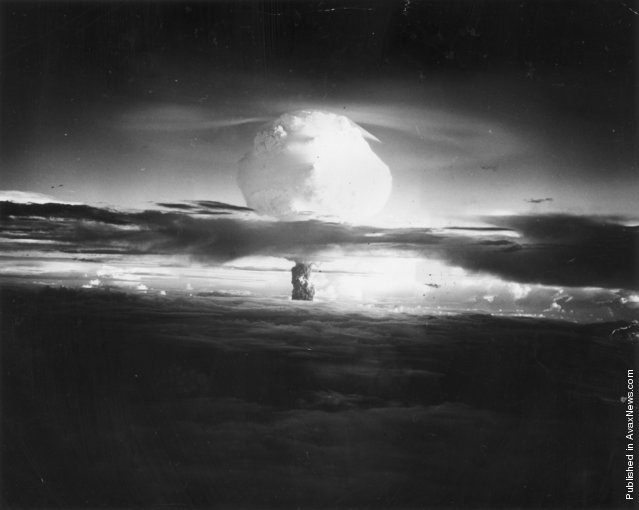
The mushroom cloud of fire and smoke rises 40,000 feet in two minutes after the Hydrogen Bomb explosion at Eniwetok Atoll in the Pacific. (Photo by Three Lions/Getty Images). Circa 1952
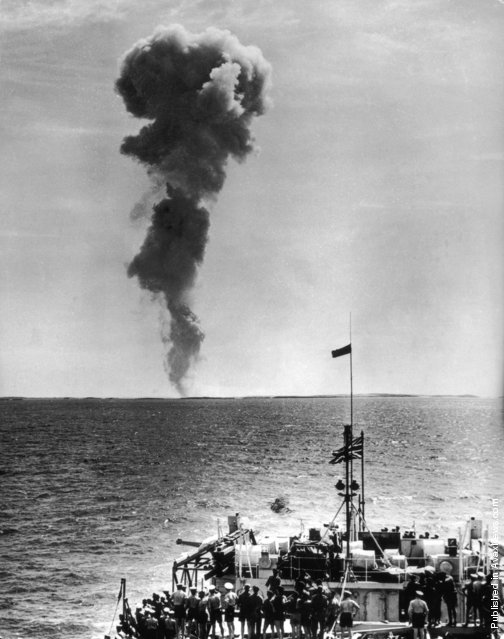
The crew of the HMS Narvik watch the smoke rise after a British atomic test, which took place on the Monte Bello Islands off the west coast of Australia. (Photo by Central Press/Getty Images). 16th May 1956
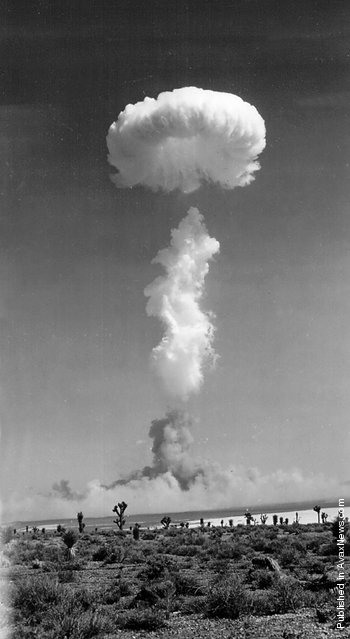
The atomic smoke rises April 22, 1952 after the atom blast of ''Big Shot'' at Camp Mercury, Nevada. (Photo by National Archive/Newsmakers)
13 Mar 2011 09:30:00,
post received
0 comments
